


Full screen
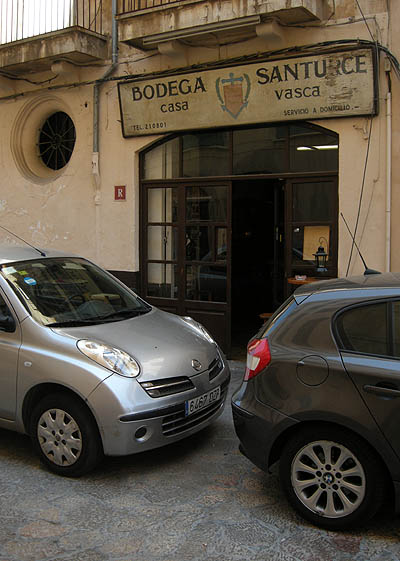
Of course, the restaurant can be reached not only along this charming street, since it is close to everything, to the Rambla just as well as to the Mallorca Promenade. Its regulars are also the office-clerks, shopkeepers and craftsmen working here, in the heart of the downtown, the employees of the nearby Hospital General (which the local government has just decided to close down) as well as the foreigners regularly coming back here. We also have been coming back here for ten years.
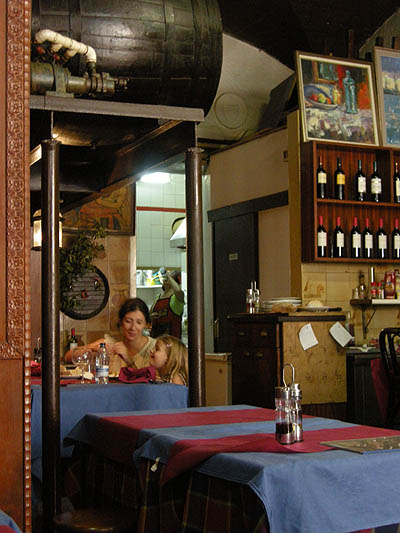
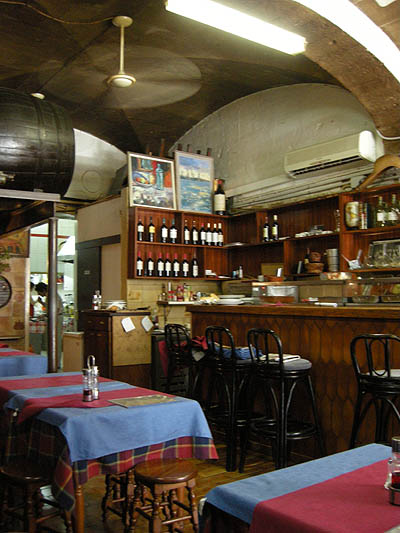
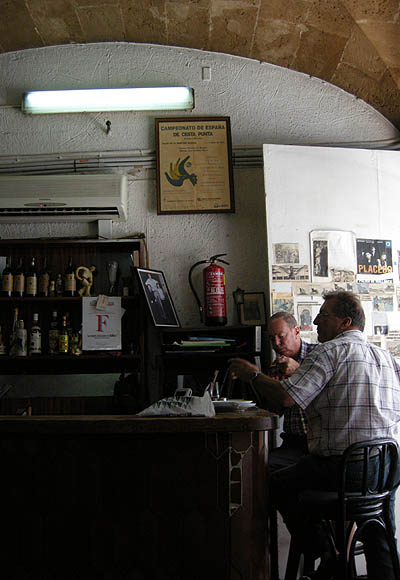
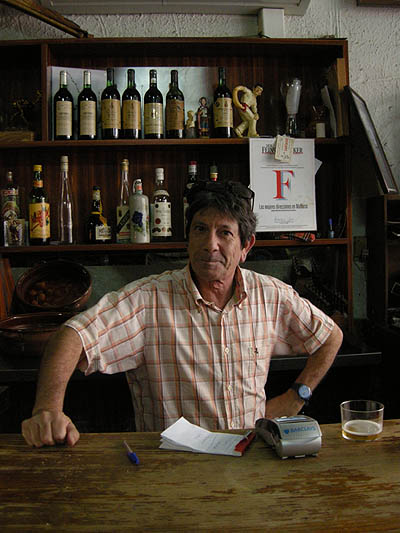
From behind the counter José Antonio Rocha, “Tontxu” dominates the situation. He recites in his characteristic hoarse voice to the newcomers the daily menu and specialties. And before you’d ask for anything, he draws off a zurito, a welcome-beer in a flat glass to each of you, accompanied by a couple of jokes and a look revealing deep irony. But the real soul and engine of the restaurant is his wife, Ana (Ana María Almonacid).

The restaurant was opened fifty-one years ago, in 1961 by Tontxu’s parents, a Basque couple of cesta-punta or jai-alai players. This game was huge in popularity at that time: one could make a living of ti, or even travel all over the world, as the photos decorating the walls of the restaurant show it.
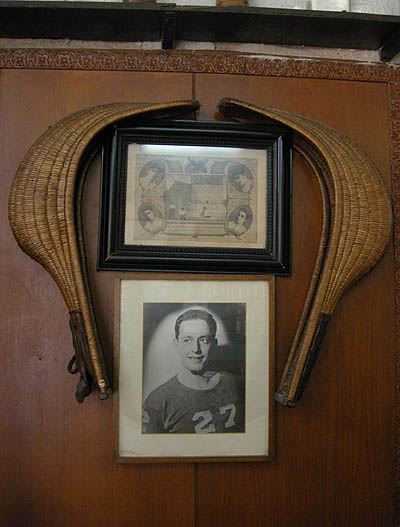

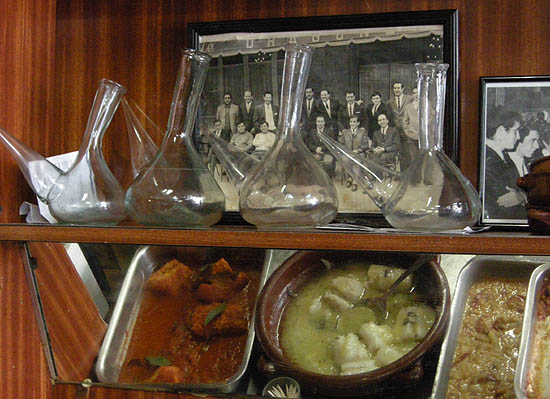
The Basque Antón Rocha and his wife, the Catalan Montse Capellán settled in Palma after they abandoned racing. They opened the place originally as a pub for the local players of the Frontón Balear, who first came together here for a beer or a wine, and only much later they began to also serve meals, the courses of the Basque kitchen characterized by simplicity and good basic materials: bacalao al pilpil (cod baked on low fire), marinated tuna and bonito, boquerones rebozados (fried anchovies), bull’s tail, tripe.
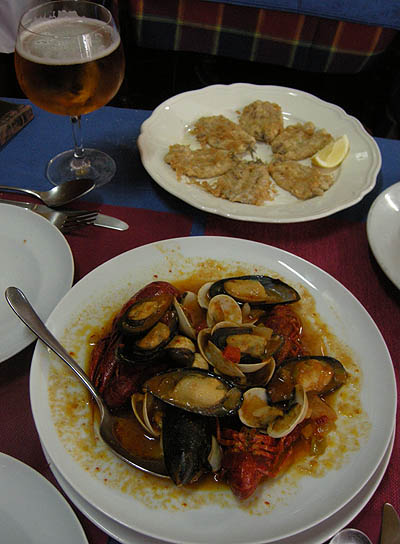 Mejillones (mussels), almejas (clams) and cangrejos (red crab). In the background the boquerones are waiting for their turn.
Mejillones (mussels), almejas (clams) and cangrejos (red crab). In the background the boquerones are waiting for their turn.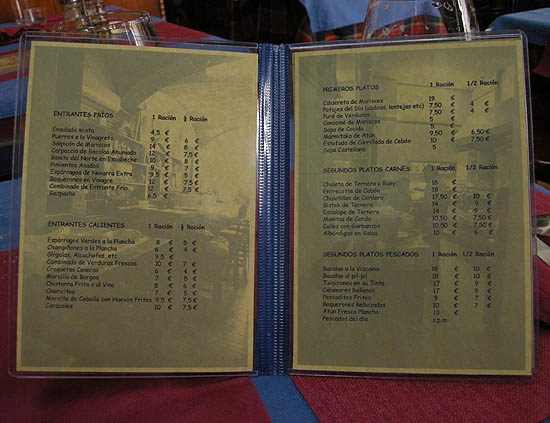
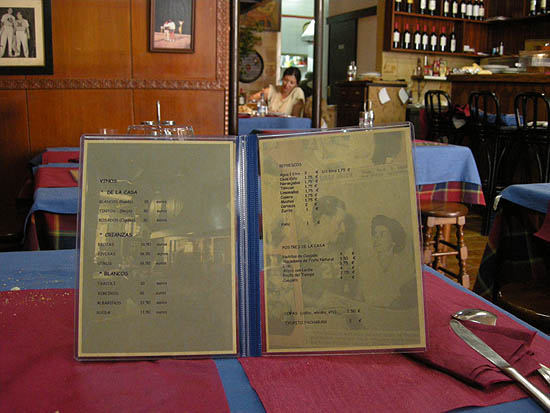
But the real boost to the restaurant was given by Ana, who came almost by accident from Bilbao in the Basque Land to Palma, and after becoming acquainted with Tontxu, she also remained here. She took over the leadership in the kitchen and the service of the guests, and with a tireless enthusiasm and joy, whenever we come. Since the death of his father-in-law in 1988, they both carry on the restaurant. At that time every woman in the family helped in the kitchen. Today, the crisis is also felt here: the earlier crowdedness of the restaurant has apparently decreased. As elsewhere, also in Spain far fewer people go out for a dinner. But the kitchen and the hospitality of Bodega Santurce is still the same.
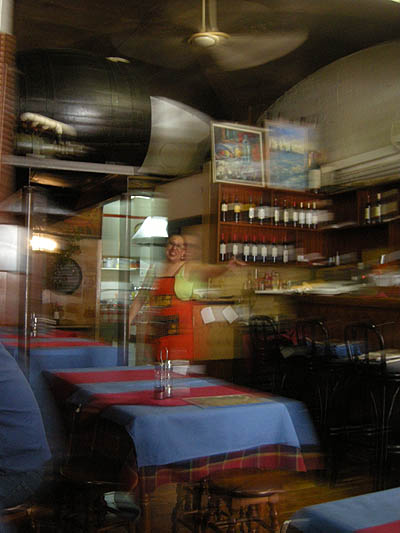
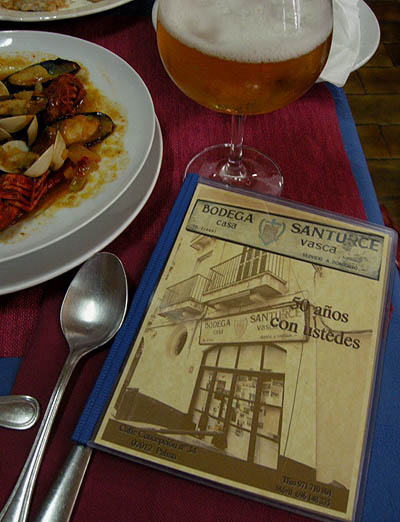

























































4 comentarios:
Mejillones (black shellfish), almejas (white shellfish) and cangrejos (red crab)
.... mussels, clams, and crayfish
Thanks! A great help to someone who, coming from a country without a sea, has no equivalents of them even in his own language.
Actually I may be wrong about crayfish because they correspond to cangrejos de río. While cangrejos de mare may be known as lobsters, even though the traditional Spanish is Langostas?
Mussels were known, half-theoretically, in Russian, as мидии. Musclo ~ mejillón. They are all over the North and East along the tidal seashores. Galician musclos start from a euro a kilo in Catalan supermarkets, and all I need to cook them is a stove and a pan. Just wash them and steam them aux jus :)
You’re the specialist, but judging from the Spanish market’s and kitchen’s point of view, cangrejo y langosta are two different species. As the ones met at Bodega Santurce are definitely from the sea, perhaps they should be called crabs in English?
Publicar un comentario